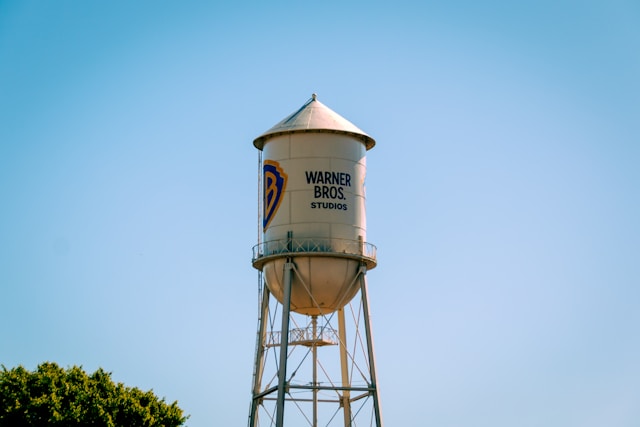Warner Bros. Discovery, Inc. (WBD) announced plans to separate into two independent publicly traded companies by mid-2026, reversing one of the largest entertainment mergers in recent years. The restructuring is intended to create operational focus, streamline capital allocation, and provide clearer valuation metrics for investors.
According to the company’s July 2025 announcement, the new entities will be Warner Bros., encompassing the studio and streaming operations, and Discovery Global, encompassing the company’s traditional television networks and related assets. The transaction, first disclosed in June and reaffirmed by Chief Executive Officer David Zaslav in September, is expected to close by April 2026.
Transaction Overview
Under the current proposed structure, Warner Bros. will include Warner Bros. Pictures, Warner Bros. Television, DC Studios, HBO, Max, and Warner Bros. Games. Discovery Global will hold linear and cable networks such as CNN, Discovery Channel, TNT Sports, and the Discovery+ streaming platform.
Zaslav will continue as president and CEO of Warner Bros., while current Chief Financial Officer Gunnar Wiedenfels will serve as president and CEO of Discovery Global. The separation follows WBD’s 2022 formation through Discovery’s $43 billion acquisition of WarnerMedia from AT&T. That transaction combined assets across scripted entertainment, news, sports, and unscripted programming but left the merged entity with approximately $37 billion in debt.
On an investor call, Wiedenfels stated that most of this debt will be allocated to the cable-focused Discovery Global, with the remaining portion assumed by the new Warner Bros. entity. The company has also arranged a $17.5 billion short-term loan to repurchase a portion of its outstanding debt, a step analysts view as designed to stabilize credit ratings during the transition.
Legal and Strategic Considerations
From a corporate governance perspective, WBD’s separation is consistent with recent trends toward simplification and targeted market positioning in the media sector. By creating two specialized companies, WBD aims to reduce cross-subsidization between businesses with divergent economic models, like advertising-supported linear television and subscription-based streaming, and to enable independent management of each company’s balance sheet and growth strategy.
The transaction also unwinds, in substantial part, the 2022 Discovery-WarnerMedia combination, which was based on achieving scale efficiencies to compete with larger streaming rivals. The market response to that merger suggests that size alone has not generated competitive advantage in the current distribution environment, where investor focus has shifted toward profitability and content return on investment.
The planned spin-off may also have antitrust and competition implications, though no new merger-control filings are expected. The structure effectively isolates the high-debt, lower-growth assets within Discovery Global, while positioning Warner Bros. as a potential acquisition target. Similar separations have occurred elsewhere in the industry, most notably Comcast’s creation of Versant, a stand-alone linear-television entity, announced in 2024.
Potential Market Activity
Following the announcement, industry observers began to speculate about potential acquisition interest in Warner Bros. While no merger discussions have been confirmed, the company’s leadership has indicated that the separation is intended to provide greater flexibility for future transactions. Analysts have suggested that major streaming and technology companies, including Netflix, may assess Warner Bros.’ production and distribution assets once the split is complete.
Intellectual Property and Studio Operation Implications
The separation will concentrate Warner Bros.’ intellectual property portfolio, including the DC Comics universe, the Harry Potter franchise, and the Warner Bros. film and television library, under a single corporate entity. DC Studios will remain within Warner Bros. This structural organizational continuity may help support ongoing production schedules and existing licensing agreements.
However, a future sale or merger could require revisiting major contracts, distribution arrangements, and intellectual property licenses. Large-scale transactions of this nature often involve review of assignment provisions, financing terms, and collective bargaining agreements. For content partners, the separation creates new counterparties with differing financial positions and business objectives.
Industry Context
WBD’s restructuring aligns with a broader shift in the entertainment industry, as companies move from aggressive expansion toward long-term profitability. Many media organizations are reassessing their business models, separating higher-margin production and streaming units from slower-growth cable and broadcast operations. These separations are generally structured as tax-free spin-offs under Section 355 of the Internal Revenue Code, subject to IRS approval and SEC disclosure requirements. While WBD has not yet filed detailed documentation, the company is expected to outline the transaction in its 2025 Form 10-K or a later proxy statement.
Conclusion
Once the separation is complete, Warner Bros. and Discovery Global will operate as independent public companies, allowing investors and strategic partners to evaluate each business on its own performance and growth potential. The transaction may also provide a model for other media conglomerates responding to debt constraints and changes in consumer demand.
Regardless of whether the companies remain independent or pursue future mergers, the restructuring reflects the broader structural transformation underway across the entertainment sector. WBD’s approach demonstrates how corporate restructurings can be leveraged by media companies to manage risk, sharpen strategic direction, and preserve profitability in a shifting content market marked by rapid technological change.
Contribution to this blog by Gianna Smurro.


